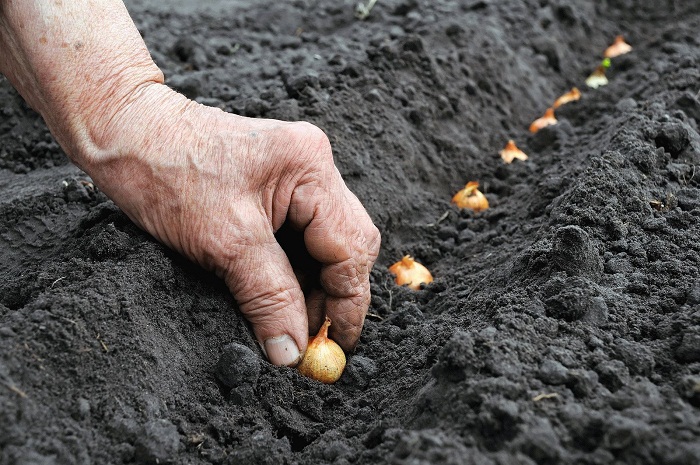 The lunar calendar contains information on when it is best to plant onions so that it can tolerate wintering well. Dates may vary. Growth processes in the soil and above the earth depend on the lunar phases.
The lunar calendar contains information on when it is best to plant onions so that it can tolerate wintering well. Dates may vary. Growth processes in the soil and above the earth depend on the lunar phases.
Given this factor, we will try to figure out when to plant onions on a turnip in 2018.
Content
Landing time
In the spring, it is advisable to plant bulbs 1-2 cm in size, and in the fall - very small. Late plantings are best done thick so that the vegetable does not freeze. After a successful wintering, the remaining seedlings will be served to the table as early greens.
The lunar calendar determines the favorable days for each procedure performed with onions:
For landing
- April - 7–8, 17, 29;
- May - 4–5, 14, 31;
- June - 1–2, 10–11, 18–19, 29;
- July - 7–8, 15–16;
- August - 4–5, 12–13, 31;
- September - 1, 8, 27–28;
- October - 6–7, 25;
- November - 2-3, 21-22, 29-30
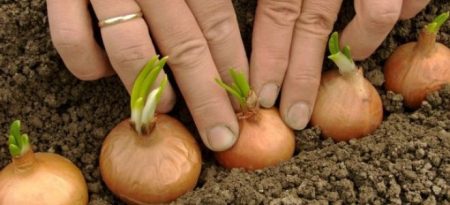
For distillation
- January - 24–25;
- February - 20–22;
- March - 20-21;
- April - 17;
- October - 25;
- November - 20, 21;
- December - 18, 19
Days not suitable for watering
- January - 7–8, 26–27;
- February - 4–5, 23–24;
- March - 4–5, 23–24;
- April - 1, 18, 19, 27, 28;
- May - 16–17, 24–25;
- June - 12–13, 20–21;
- July - 9–10, 17–19;
- August - 6–7, 14–15;
- September - 9. 29-30;
- October - 8–9, 26–28;
- November - 23, 24;
- December - 20, 21
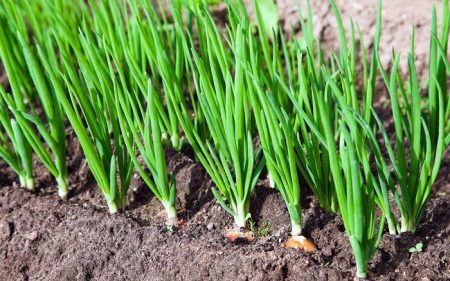
For combined feeding
- April - 2-3, 7, 12;
- May - 1, 8, 10-12, 18, 25;
- June - 1, 6, 10;
- July - 2-5, 20, 21, 24;
- August - 3-4, 9-12
For dry top dressing
- May - 16, 25;
- June - 23, 29-30;
- July - 20, 21;
- August - 1-4
The lunar calendar is an excellent assistant in planning the planting of vegetables and getting a good harvest.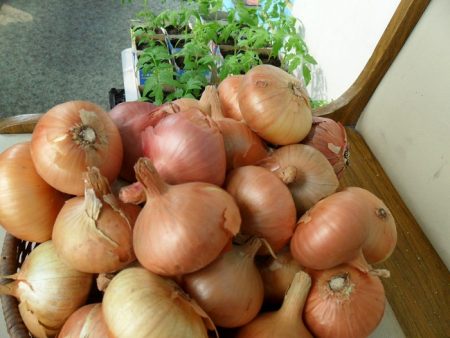
When to plant onions on a turnip, depending on the territory
Planting time is selected based on soil properties and climate characteristics. If the region does not have the coldest winter, it is advisable to plant onions in late October - early November, about a month before frosts. Sowing of seeds is carried out from the moment the air temperature drops below 5 degrees and remains so for a week.
As follows from practice, sowing and planting onions on a turnip is necessary:
- in the suburbs - in greenhouses in mid-April, and in the garden under the film from May 5;
- in the north, including in the Urals and Siberia, a vegetable has been grown for 2 years: first, sowing grows, and after a year - large high-yielding onions;
- in the greenhouse - after warming the soil to 5-8 degrees;
- in Chernozemye and the Krasnodar Territory, chernushka is sown on the warm days of March, in moist soil, and in the summer they are already harvested;
- seedlings in Chernozemye and Krasnodar are planted on the eve of winter (October-November), but a maximum of 1 month before cold weather
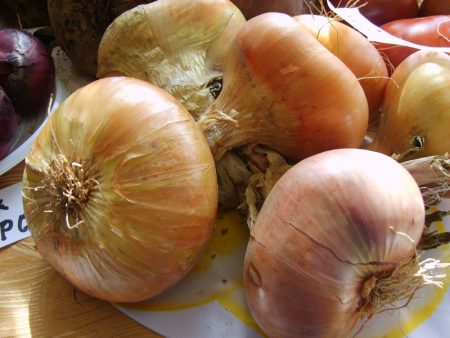
How to plant onions on a turnip: preparation and scheme of work
In order for the onions to be large and of high quality and can be stored for a long time without losing their commercial qualities, a number of rules must be followed:
- Create proper drainage by breaking ridges in the area with a minimum of clay. The most suitable soils are loams with humus and a ph value of 6.4-7.9.
- Be sure to lime acidic soils. When preparing the soil for winter, the beds are dug to a depth of 35-45 cm, weeds are completely removed, humus and mineral fertilizers are applied.
- Performing autumn digging, add 3 kg to each square. humus and compost, superphosphate, nitrophosphate and wood ash (1 tablespoon each).
- To level the prepared beds in the spring, pour them with copper sulfate (1 tbsp.spoon per bucket of water). For 1 square. m. should be 2 liters. liquids. After the procedure, the ridges are covered with a dark film for 2 days.
- Plant onions after green manure, tomatoes, cabbage, legumes. Garlic, onions, cucumbers, carrots are undesirable predecessors.
- Sort the seeds, selecting material by size, and 3 days before planting, warm it at 30-40 degrees, then soak for 10 hours in a fertilizer solution and treat with copper sulfate.
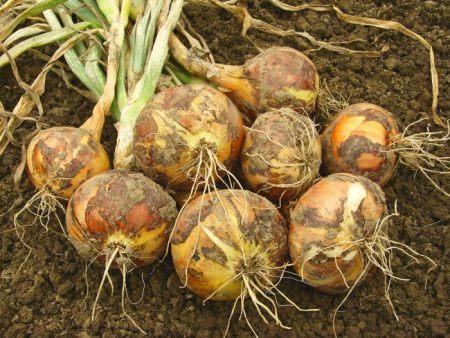
Sevka is planted according to the scheme of 25 * 10 cm. Seeds are sown according to the parameters of 15 * 1.5 cm, then watered and covered with a film so that the soil does not dry out. It is desirable to deepen the sevka by 40 mm., And the shoulders of the bulb should cover 20-25 mm. the soil. Seeds at the same time close up by 20 mm. In order to get an early harvest, seedlings need to be grown with transplantation to a permanent territory.
Onion care after planting
Agricultural technology of growing turnips includes several procedures: cultivation, watering, weed removal, top dressing. Instances that attacked pests or diseases must be removed on time. It is impossible to spud a vegetable.
Care procedures must be carried out throughout the vegetative period. Drying of the ground or the growth of weeds is unacceptable.
Watering
The soil should be moderately moist. Watering is carried out early in the morning or in the afternoon, so that fungal diseases do not develop. Onions, which were planted in the spring, are watered 1-2 times a week.
In early July, the volume of water is reduced, and then its supply is completely stopped. This is done so that the bulbs dry out, gain a dense husk, gain weight. An exception is the hot dry climate, in which the plants wilt. But in this case, watering should be minimal.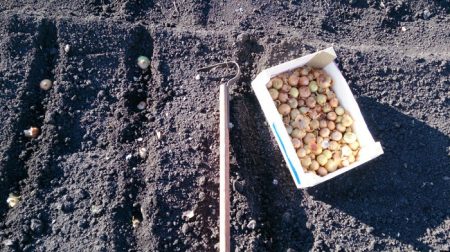
Top dressing
Onions growing in open ground are periodically provided with fertilizers. Preparations conducted in the fall and spring may be in short supply. In this case, the vegetable is fed 2 weeks after planting. You can use a solution of manure, dry mullein, bird droppings.
Loosening
On the surface of the beds where the crop grows, there should not be a dense crust. It leads to a lack of moisture in a drought, and in plentiful plantings it does not evaporate for a long time. With increased humidity and lack of oxygen, fungi become activated, which is unacceptable.
In the process of loosening, you need to get rid of weeds.
In order to grow the formed bulb as quickly as possible, it is necessary to free the upper part of the soil. Then we get large “turnips”.
How to harvest and store crops
Ripe onions should be removed from the garden on time. This is done in dry weather. 2-3 weeks before the procedure, top dressing, cultivation, watering are stopped. The onion does not ripen immediately, but it is harvested when foliage grows in most crops. Otherwise, growth can resume after 8-10 days, and the turnip cannot be stored for a long time.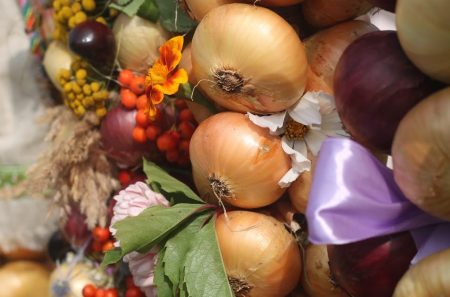
The plant is pulled out with the root, carefully cleaning it from the ground, and left in the open air to dry if the weather helps. Turnips can be removed for 10 days until the leaves completely dry. Drying should be carried out under the sun to disinfect the crop.
The next stage is the placement of onions under a canopy, where air circulates well. Overdrying is undesirable, because the upper scales fall off and the vegetable does not lie well. Dry leaves are cut at a distance of 3-5 cm from the neck, calibrated, break off and slightly burn the roots.
Bulbs are placed in boxes, baskets, nets, fabric bags and stored in a dry place where the temperature is 0-1 degrees. Sometimes they are weaved into braids and hung on the wall, but not in a thick layer so that the product does not deteriorate. During storage, diseased or sprouted specimens are sorted.

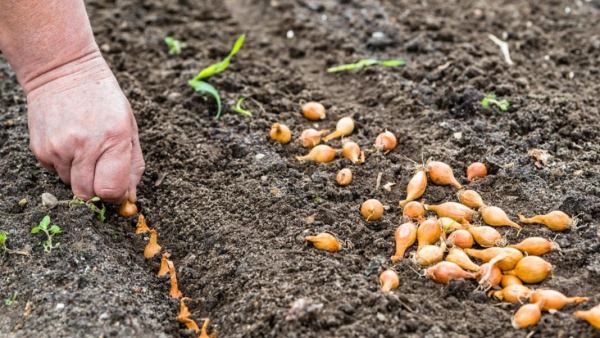
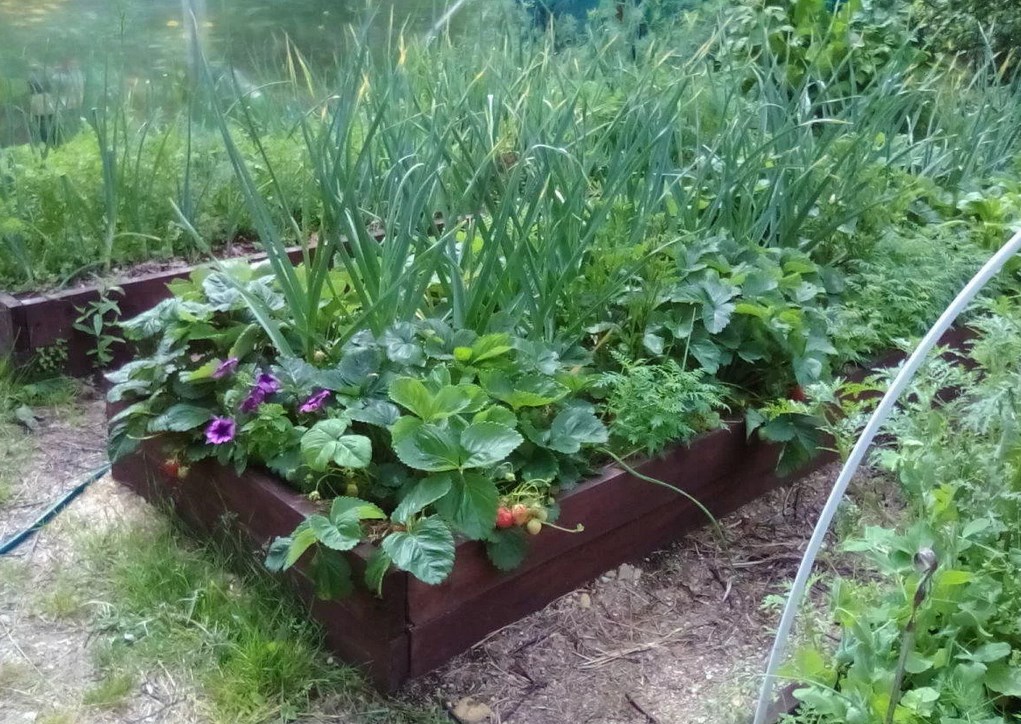
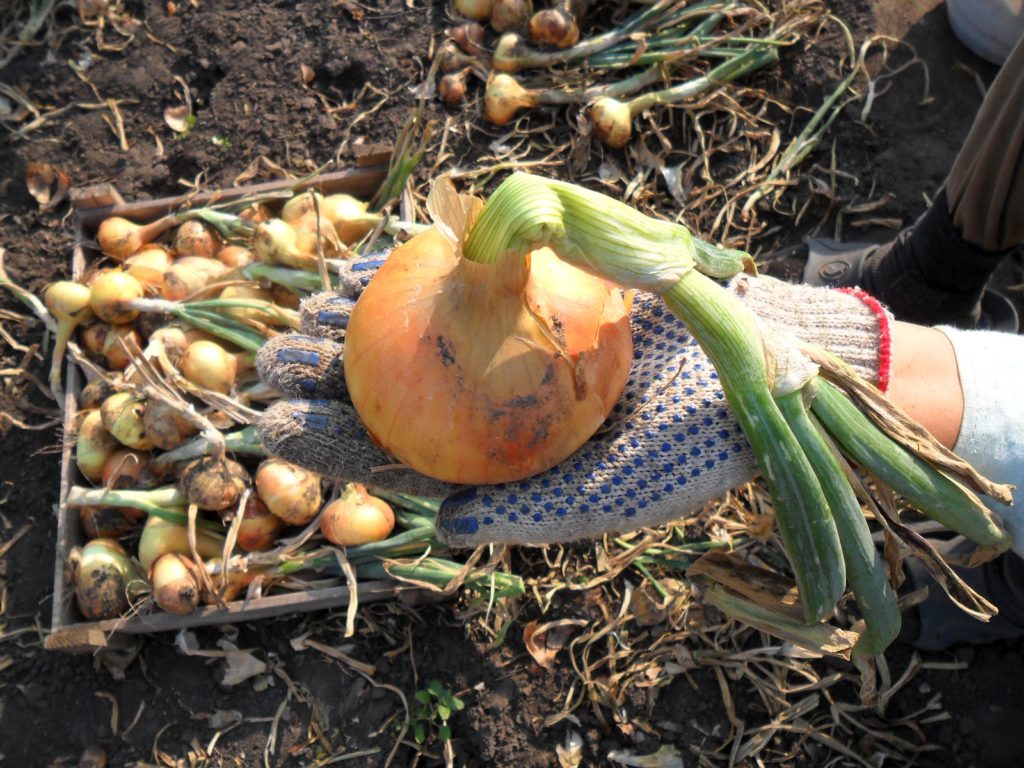
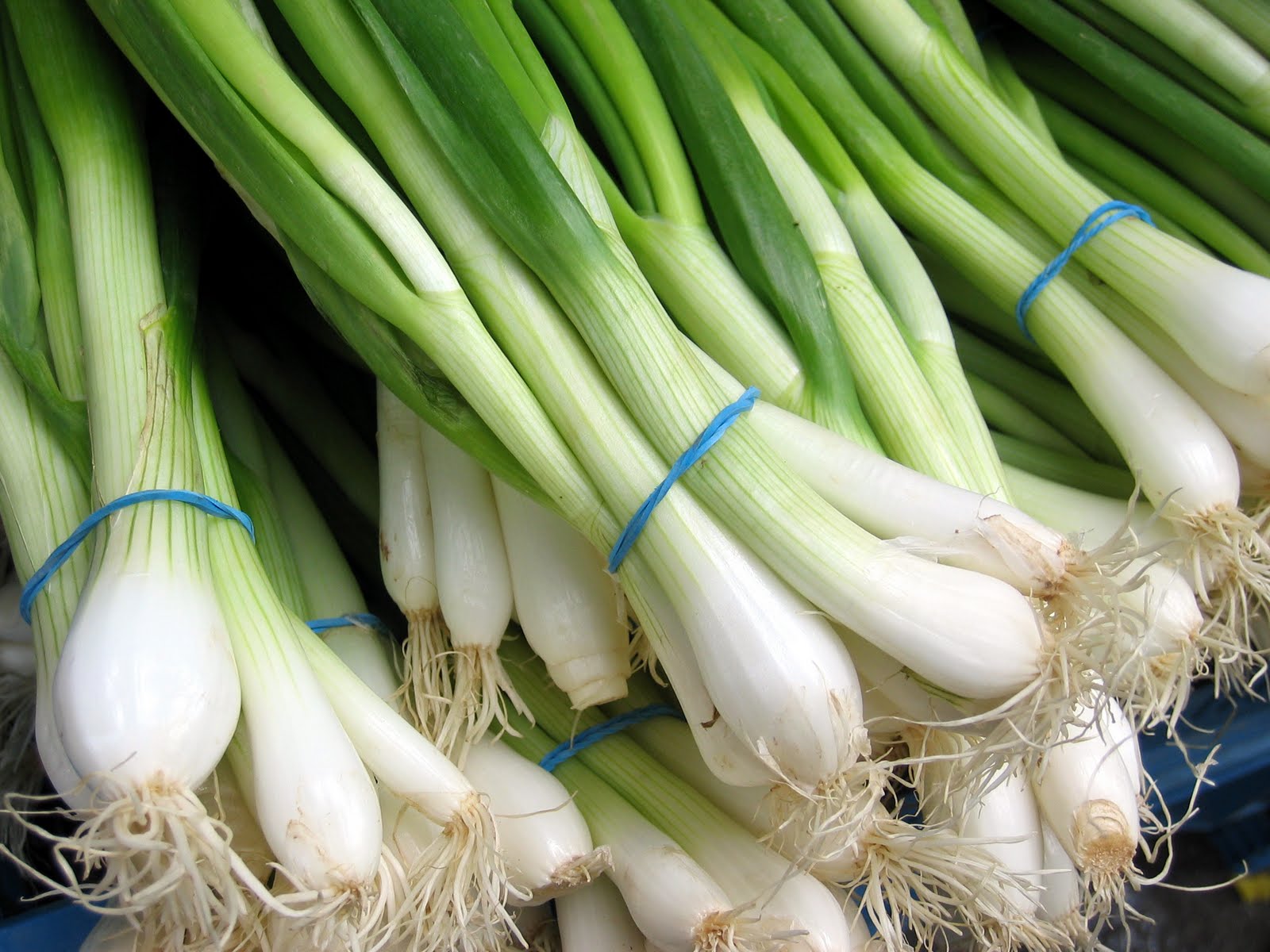 Growing onions on a feather in a greenhouse in winter
Growing onions on a feather in a greenhouse in winter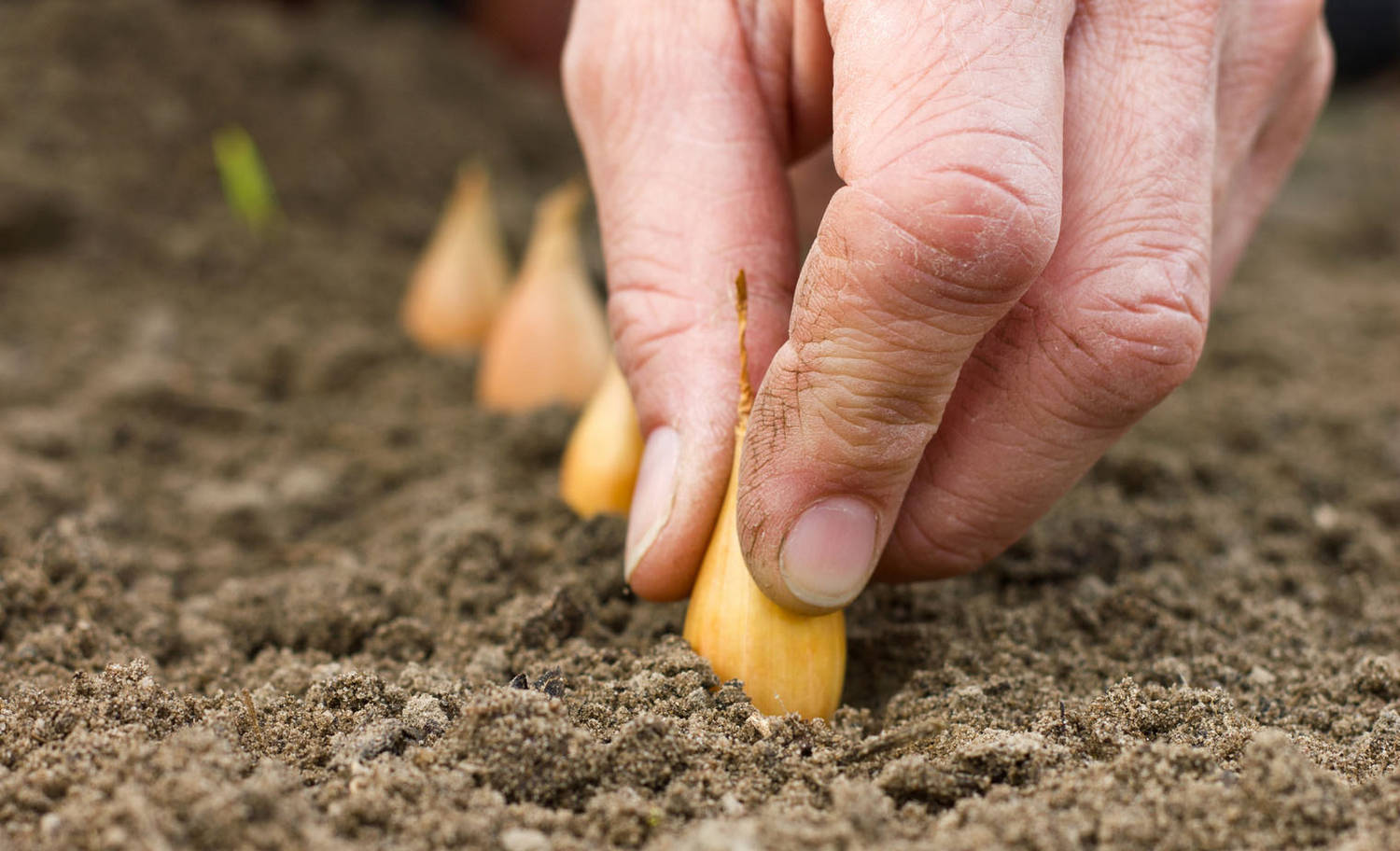 Planting onions in winter in the open ground
Planting onions in winter in the open ground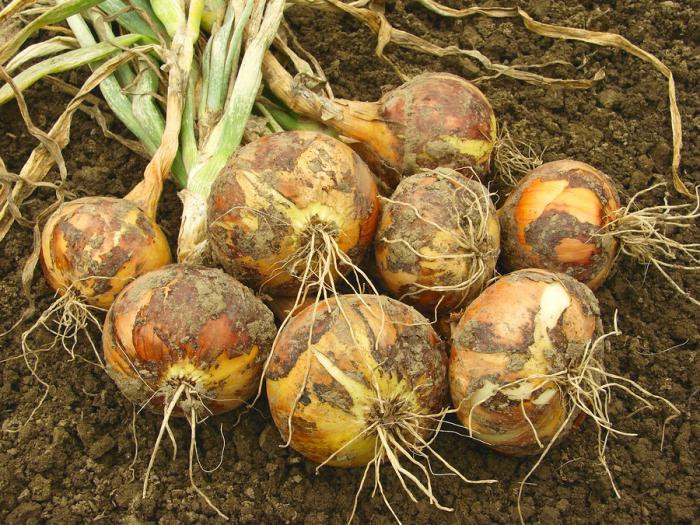 How to feed onions so that the bulbs beat large
How to feed onions so that the bulbs beat large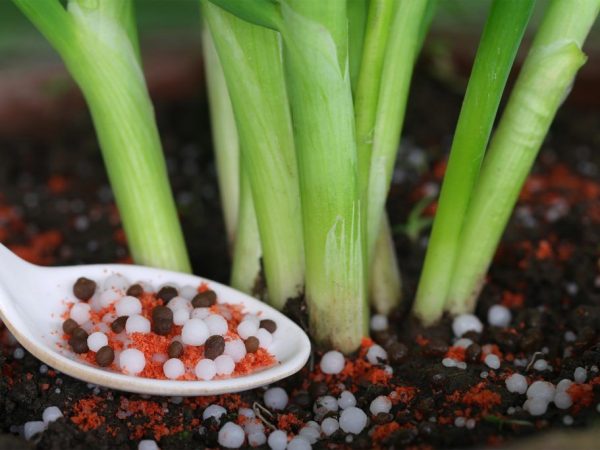 How to feed onions in spring and summer to get a good harvest?
How to feed onions in spring and summer to get a good harvest?